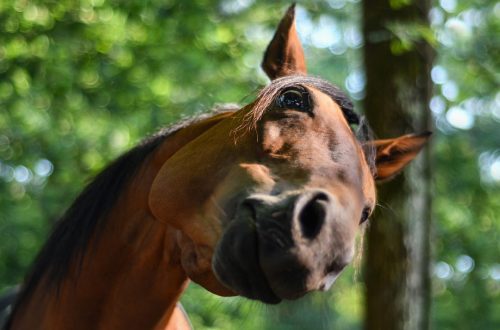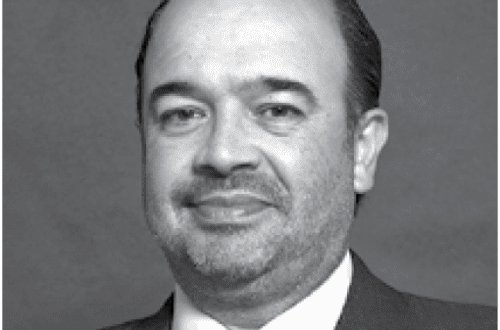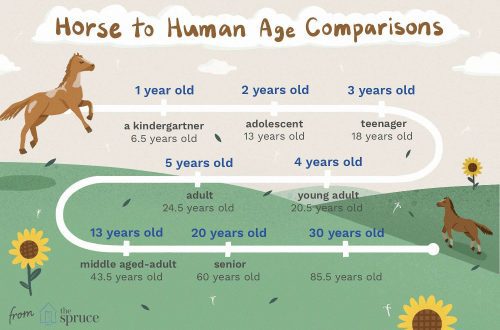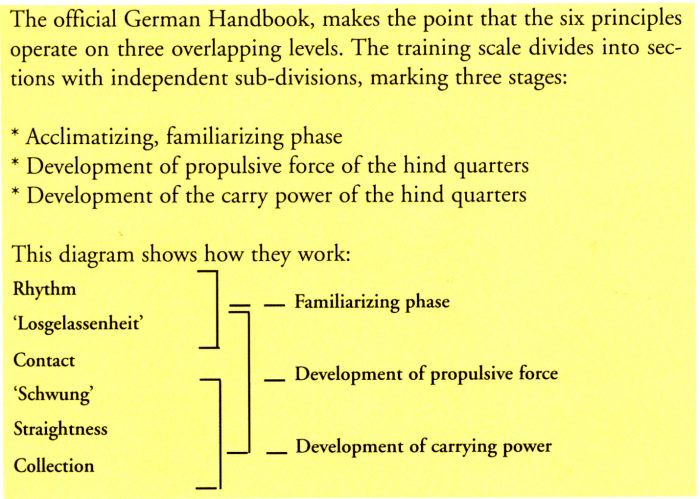
Young Horse Work: The German Training Scale
Young Horse Work: The German Training Scale
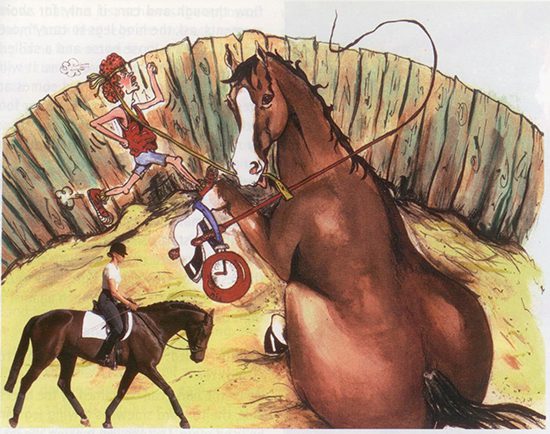
The term “horse training scale” is on everyone’s lips. But what does it mean? Rhythm, relaxation, contact iii…. forward movement (momentum), straightness and collection, you say, right? Yes!
But between the knowledge of words and the ability to define and its true understanding in practice, one can often see a significant discrepancy. Like at school, when memorized grammar rules do not help to speak a foreign language. Those who really want to gain from knowledge and be able to apply it must dig deep…
In any case, the training scale is the main reference point in the work of a young horse’s handler.
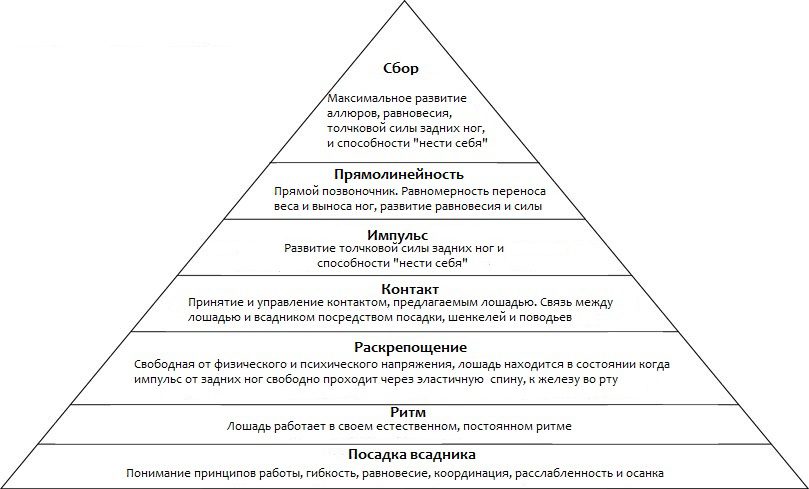
Horse training scale (illustration from the website https://ilovedressage.ru).
Of course, not all work should be built around it. The horse needs variety. Riding over rough terrain, working on the cavaletti, on the ground, in the hands, overcoming low obstacles – all this will benefit.
Like us have already written in the first months of work under riding, the young horse must get used to the weight of the rider on his back, learn to find balance again, balance himself. She also needs to understand and accept the controls (both pushing and holding back), learn to stretch forward and down. In any case, you must get the horse rhythm, relaxation and contact. The contact should be soft and supple, with the horse’s forehead and nose line in front of the vertical. Only with such a foundation can one begin to solve more complex problems.
“It’s just a theory”
Let’s get back to our terms. Rhythm is perhaps the simplest of them all. At the same time, everyone knows that errors in rhythm are associated with relaxation. But what exactly is meant by relaxation and why is it needed?
To get an answer, we have to completely change the question. What is not relaxation? Relaxed does not mean relaxed from fatigue or just weak. Muscles should be in good shape, but not tense, stiffness and contractions caused by spasms are unacceptable. Relaxation involvespositive tone and freedom.
How do we imagine a good dancer? Is it a pinched, barely taking off feet from the ground, embarrassed teenager who leads his lady at a distance of two meters, or a beefy bodybuilder who confused the dance floor with the gym? Of course no! We imagine a dancer who moves easily on the stage, he is flexible and relaxed.
A relaxed, liberated horse moves smoothly but dynamically, contracting and relaxing its muscles. A horse that is struggling to get its feet off the ground is not as relaxed as one that is “running away” from under the rider. Both the lack of movement and haste always testify to enslavement.
The rider must understand that “external” relaxation can only be achieved in combination with “internal” relaxation based on trust in the rider. Not only behavior, but also the seat and the general relaxed state of the rider have a positive effect on the horse.
The back is the center of any movement
Let’s turn to the anatomy of the horse.
The “engine” is located in the hind legs, and the back is the central point through which movement is transmitted for each movement. If this center is defective due to the muscles of the back not working freely, we will encounter various problems – with rhythm, mouth and tongue, tightness and resistance in the neck, pushing the reins, trailing the reins, inadequacy, nervousness, laziness or haste (depending on the individual characteristics of the horse).
Today, more often than in former times, incorrect work of the back is noted already in the early stages of training. The horse’s back muscles can only work properly and comfortably take the rider in motion when the horse can balance itself. For this she needs her neck. The young horse should stretch its head and neck forward and down to lift its back up. If a horse, especially a young one, is too tight in the neck or taken on the reins too early, it will stiffen the back muscles, causing the movement to not flow through the horse. It is easy to understand that such a state is uncomfortable for both the horse and the rider. So I repeat: relaxation is based on the rhythmic movements of the horse in comfortable contact with the hands of the rider. This should be the goal of your training. This is something we are working on improving.
At the end of the warm-up and at the end of the working phase of the session, let the rein slip through your fingers and you will see if your work was successful.

Transitions release energy
In progressive learning, transitions play an important role, with the correct use of half-halts playing a leading role. The rider must understand that the half halt does not mean simply pulling the reins. The half halt is not only rein work, but a combination of controls. It has to do with the balance of the whole horse. An experienced rider understands when to use the aids to act on the horse’s hind legs and encourage him to put them deeper under the body, closer to the center of gravity. It will slow down a bit, carefully using restraints. During a well-executed half-halt, the horse will correctly respond to restraining aids. With a well-done transition the movement “flows” through the whole horse.
Transitions within the gaits have a particularly positive effect on the improvement of rhythm, relaxation and work of the back. The horse activates the work of the hind legs and improves impulsion – the fourth point on the Scale. If the horse’s neck is in the correct position, the back muscles become stronger, and the movements move to a whole new level. It is important to understand that this is not yet a medium trot or medium canter, but a simple lengthening of the steps. From them will develop an extension of the tempo.
Gait transitions, such as trot-canter and trot-walk, improve the flow of energy through the horse and may, for brief moments, give the rider the opportunity to ask the horse to shift weight back. For a relaxed horse and experienced rider, this is rarely a problem. A problem can arise when a message is delivered at the wrong time, too weak or too strong.
Today, during the working phase of training, riders are more likely to work at the training trot. However, there will be nothing wrong if the rider after a well-executed move will get into a combat landing and let the rein slip between his fingers. It is sometimes helpful to switch to a posting trot if you encounter resistance, especially if it looks like a tight back. Energy cannot pass through a stiff back.
Flexion and regulation for straightening
Once the horse is in the rider’s aids, work can begin on moving forward and sideways. Exercises such as narrowing (in one track) and widening circle from the impact of the leg, trotting around, narrowing and widening through the traverse, school rules and bending make the horse engage his back and make his body more flexible. When riding in turns, the horse becomes softer in both directions. Riding long curves while maintaining rhythm and momentum is more rewarding than riding tight curves early. It’s not the size of the turn or lap that matters, but the quality of the ride. Correct bending and positioning is only possible if the horse is in the correct contact. In order to solve problems with bending and stooping, the rider must recognize the natural asymmetry of the horse and see the difference between the stiffer and the more flexible sides.
When moving in a problematic direction, many riders try to get the horse to bend in the body by overworking the reins, but every experienced trainer knows that such actions have the opposite effect. Only if both hind legs are parallel to each other, closer to the center of gravity, will the horse be able to bend easily to either side. Work on the harmonious development of the horse’s body is the basic task of preparing the horse and the basis for subsequent collection. If the basics are correct (the horse is relaxed, his back is working and not tense), you can start working on the collection even in the second year of training, but only with short repetitions.
When working with a young horse, it is necessary to move forward in short steps, which will eventually lead us to visible progress. It is safe to speak of good basic training if the horse moves freely, relaxed and willingly obeys the aids of the rider; she takes his weight on her back evenly and without prejudice to herself, likes to work under the saddle. If the main criteria of the Scale of Learning are regularly reviewed and improved, then during the second year of study you will progress narrow the turns down to six meters, pass tight serpentines, perform transitions from walk to canter, and then from canter to walk, perform stops and reins, etc. By the end of the second year, you will be able to work at the Elementary level.
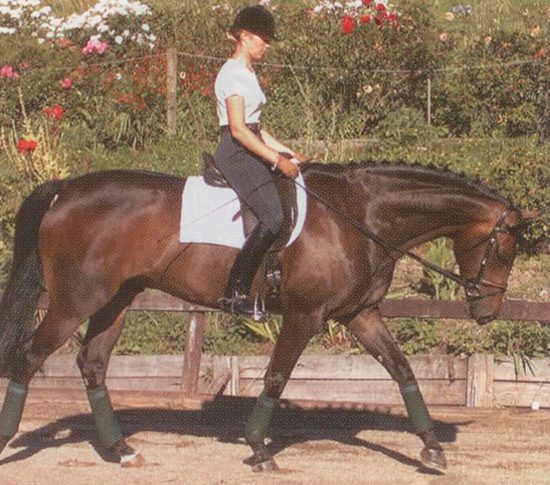
Test yourself. If you can answer yes to most of the questions below, then your horse’s basic training has been done correctly.
1. Does your horse move with rhythm in all three gaits?
2. After warming up at the walk on a free rein, can you get the horse to contact without any problems? Is the line of her forehead and nose in front of the vertical?
3. At the end of the warm-up, does your horse engage his back, move on the bit, and be ready to follow your hand forward and down?
4. Contact permanent?
5. During the work phase, can you work on transitions without resistance or tightness?
6. Are you comfortable in the saddle? Does your horse take you on his back?
7. Are turns safe and balanced?
8. Can you bend the horse and ask for ruling in both directions? Does she go on the outside rein?
9. Does your horse understand the forward and sideways movement of the legs?
10. Can a horse work alone or in a group? Is she calm and relaxed wherever you go or bring her?
11. Is the horse familiar with cavaletti and jumping under the rider? Does she stay calm and relaxed?
Susan Misner (source); translation by Valeria Smirnova.



